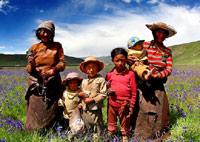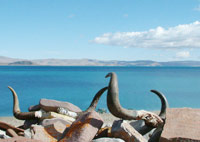60th anniversary of the peaceful liberation of Tibet

|
?Editor's note? |
|
 |
May 23 marks the 60th anniversary of the peaceful liberation of Tibet. On May 23, 1951, a 17-article agreement was signed between the Tibetan local government and the central people's government in Beijing. According to the agreement, Tibet is a part of China; the local armed forces of Tibet became incorporated into the PLA; and the freedom of religious belief in Tibet is guaranteed. More >> |
|
?Facts and figures of Tibet |
|
 |
The Tibet Autonomous Region, covering one-eighth of China's territory with a population of 2.8 million, has developed rapidly in recent years. From 1951 to 2008, state investment in infrastructure in Tibet exceeded 100 billion yuan.??More >> |
|
?History of Tibet? |
 |
Since early time before Christ, ancient people began to reside on the Qinghai-Tibet Plateau in southwest China. After a prolonged period of time, tribes that had scattered on the plateau gradually united and formed a nationality known as the Tibetan ethnic group today. More >> |
|
?Religious policy in Tibet |
 |
The majority of Tibetans are believers in Tibetan Buddhism. China's Constitution stipulates that it is a basic right of Chinese citizens to enjoy freedom of religious belief. The provisions on freedom of religious belief as stipulated in the Constitution have been actively implemented in Tibet. Protected by the Constitution and other state laws, the broad masses of Tibetans have the freedom to conduct normal religious activities. More >> |
|
?Tibet through a lens |
|
|
|
|
|
|
|
|
|
 0
0 












